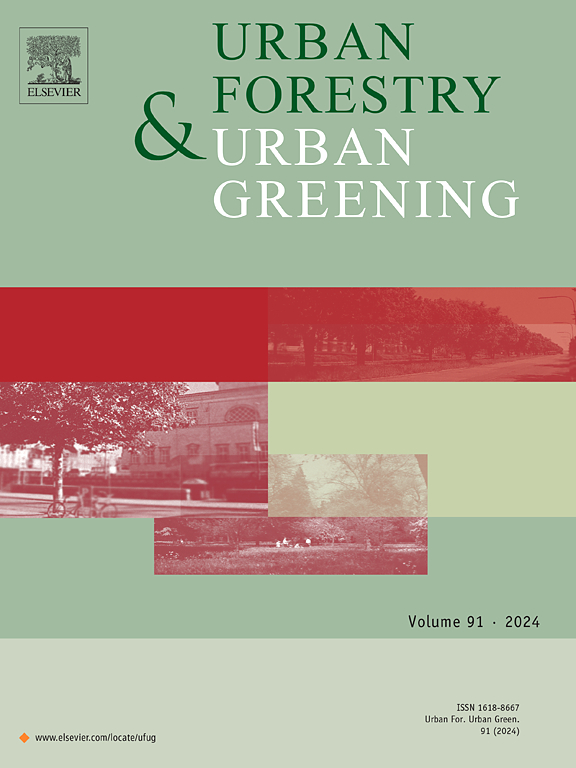Drone-based assessment of urban green space structure and cooling capacity
IF 6
2区 环境科学与生态学
Q1 ENVIRONMENTAL STUDIES
引用次数: 0
Abstract
The urban green spaces (UGS) structure are important attributes affecting a wide range of ecosystem services in cities, especially the potential cooling effects of trees and vegetation. However, the coarse resolution of most satellite images limits the ability to detect and assess the structural characteristics of UGS and their effects on the thermal environment. In this direction, drones provide an ideal tool to overcome this issue. In this study, we employed Random Forest algorithms and Python tools modelling to produce detailed land use patterns for two typical UGS in China (i.e., urban parks) to explore the effect of UGS structural factors on the thermal environment and its cooling capacity. We used two UGS in Baoding as case studies: Jingxiu Park with diverse and complex spatial structures, and Military Academy Square characterized by single and simple structures. Our results suggest that Jingxiu Park (complex struct patterns) provides a higher cooling effect (0.551℃ lower) and temperature regulation than Military Academy Square (simple struct patterns). Additionally, land surface temperature comparisons of impervious surfaces with and without shaded areas demonstrate that shading has an enhanced cooling effect and varies across habitat types.
基于无人机的城市绿地结构与降温能力评价
城市绿地结构是影响城市生态系统服务功能的重要属性,尤其是树木和植被的潜在降温效应。然而,大多数卫星图像的粗分辨率限制了探测和评估UGS结构特征及其对热环境影响的能力。在这个方向上,无人机提供了一个理想的工具来克服这个问题。本研究采用随机森林算法和Python工具建模,生成了中国两个典型UGS(即城市公园)的详细土地利用模式,探讨UGS结构因素对热环境及其制冷量的影响。我们以保定的两个UGS为例进行研究,一个是空间结构多样复杂的景秀公园,另一个是结构单一简单的军校广场。研究结果表明,景秀公园(复杂结构模式)比军校广场(简单结构模式)具有更高的降温效果(降低0.551℃)和温度调节效果。此外,对不透水地表的地表温度进行比较,发现有阴影和没有阴影的地表具有增强的降温效果,并且在不同的生境类型中有所不同。
本文章由计算机程序翻译,如有差异,请以英文原文为准。
求助全文
约1分钟内获得全文
求助全文
来源期刊

Urban Forestry & Urban Greening
FORESTRY-
CiteScore
11.70
自引率
12.50%
发文量
289
审稿时长
70 days
期刊介绍:
Urban Forestry and Urban Greening is a refereed, international journal aimed at presenting high-quality research with urban and peri-urban woody and non-woody vegetation and its use, planning, design, establishment and management as its main topics. Urban Forestry and Urban Greening concentrates on all tree-dominated (as joint together in the urban forest) as well as other green resources in and around urban areas, such as woodlands, public and private urban parks and gardens, urban nature areas, street tree and square plantations, botanical gardens and cemeteries.
The journal welcomes basic and applied research papers, as well as review papers and short communications. Contributions should focus on one or more of the following aspects:
-Form and functions of urban forests and other vegetation, including aspects of urban ecology.
-Policy-making, planning and design related to urban forests and other vegetation.
-Selection and establishment of tree resources and other vegetation for urban environments.
-Management of urban forests and other vegetation.
Original contributions of a high academic standard are invited from a wide range of disciplines and fields, including forestry, biology, horticulture, arboriculture, landscape ecology, pathology, soil science, hydrology, landscape architecture, landscape planning, urban planning and design, economics, sociology, environmental psychology, public health, and education.
 求助内容:
求助内容: 应助结果提醒方式:
应助结果提醒方式:


